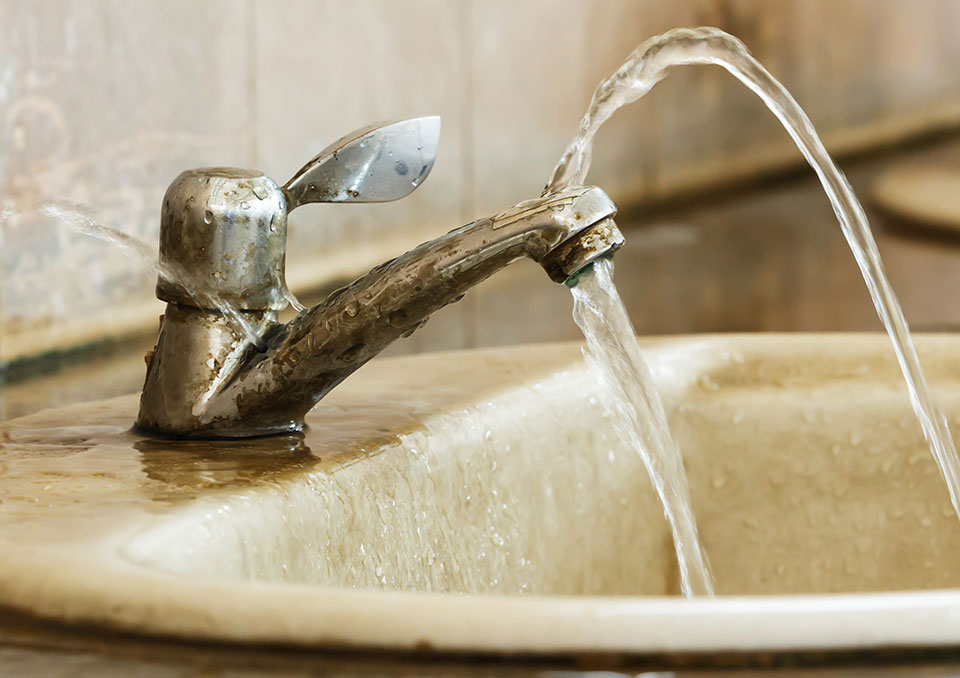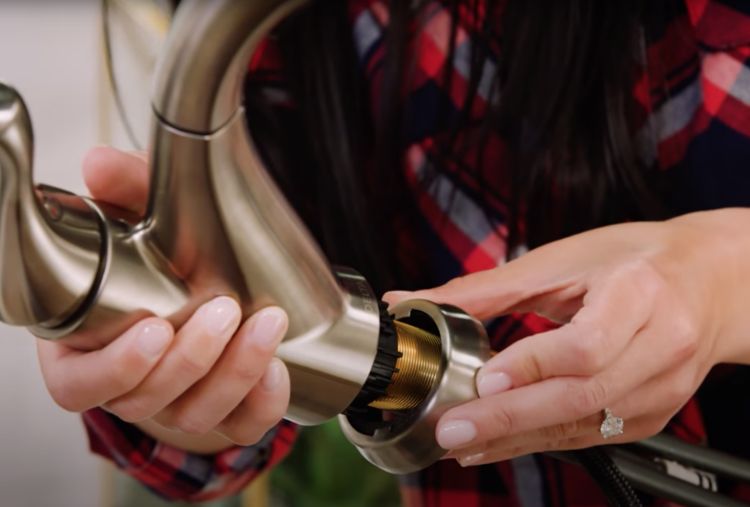Exploring the Importance of Correcting a Broken Faucet
Exploring the Importance of Correcting a Broken Faucet
Blog Article
Were you hunting for facts concerning Why It's Important to Fix Leaky Faucets?

Dripping faucets could seem like a minor hassle, however their influence goes beyond just the nuisance of the audio. From wasting water to incurring unnecessary monetary prices and wellness threats, ignoring a dripping faucet can bring about various consequences. In this short article, we'll explore why it's important to address this typical home problem quickly and efficiently.
Wastage of Water
Environmental Impact
Dripping taps add dramatically to water waste. According to the Epa (EPA), a solitary faucet trickling at one drip per second can throw away more than 3,000 gallons of water per year. This not just pressures water resources yet likewise influences environments and wild animals dependent on them.
Financial Expenses
Raised Water Bills
Beyond the environmental effect, trickling taps can inflate water bills significantly. The gathered wastefulness with time translates right into greater energy expenditures, which can have been avoided with prompt repairs.
Potential Home Damages
In addition, long term leaking can cause damage to fixtures and surface areas bordering the faucet. Water accumulation can create staining, corrosion, and also structural problems if left ignored, resulting in added repair work costs.
Wellness Issues
Mold And Mildew and Mildew Development
The continuous visibility of wetness from a trickling tap produces an ideal atmosphere for mold and mildew and mildew growth. These fungis not just jeopardize indoor air top quality yet likewise position health threats, specifically for people with breathing conditions or allergic reactions.
Waterborne Diseases
Stationary water in leaking faucets can come to be a breeding ground for microorganisms and various other pathogens, boosting the risk of waterborne conditions. Impurities such as Legionella microorganisms grow in stationary water, possibly resulting in severe diseases when ingested or breathed in.
DIY vs. Expert Fixing
Pros and Cons of DIY Repair Work
While some may attempt to fix a dripping tap themselves, do it yourself repair work come with their very own set of challenges. Without correct knowledge and devices, DIY attempts can aggravate the problem or lead to insufficient repairs, lengthening the problem.
Advantages of Hiring a Specialist Plumber
Hiring an expert plumber makes sure that the underlying cause of the leaking tap is dealt with successfully. Plumbers possess the experience and equipment to identify and fix tap concerns efficiently, saving time and decreasing the danger of further damages.
Step-by-Step Overview to Fixing a Dripping Tap
Tools Called for
Before attempting to take care of a dripping tap, gather the needed tools, consisting of a flexible wrench, screwdrivers, substitute parts (such as washing machines or cartridges), and plumber's tape.
Common Tap Issues and Their Solutions
Identify the kind of tap and the specific problem creating the drip. Common issues consist of worn-out washers, rusty valve seats, or malfunctioning O-rings. Describe manufacturer instructions or on the internet tutorials for detailed advice on repairs.
Preventive Measures
Routine Upkeep Tips
To stop trickling taps, carry out routine maintenance such as cleaning up aerators, checking for leakages, and changing worn-out parts immediately. Furthermore, think about installing water-saving devices or updating to extra efficient components.
Value of Prompt Repair Works
Resolving trickling faucets as quickly as they're seen prevents additional water waste and prospective damages, inevitably conserving both water and cash in the future.
Effect On Property Value
Perception of Well-Maintained Residential Or Commercial Property
Maintaining a residential property in good condition, including dealing with maintenance concerns like leaking faucets, enhances its regarded value and desirability among potential customers or renters.
Influence on Resale Worth
Qualities with well-kept plumbing components, including taps, command higher resale worths in the real estate market. Resolving leaking faucets can add to a positive perception throughout home inspections and settlements.
Ecological Responsibility
Private Payment to Preservation
Taking responsibility for repairing trickling taps aligns with wider initiatives towards water conservation and environmental sustainability. Every individual's activities jointly make a considerable effect on preserving priceless sources.
Sustainable Living Practices
By prioritizing timely repairs and taking on water-saving routines, individuals add to lasting living practices that profit both present and future generations.
Verdict
Attending to a dripping tap exceeds plain comfort; it's an important action toward preserving water, minimizing economic expenses, and guarding health and building. Whether through do it yourself repairs or professional help, taking action to repair leaking faucets is a little yet impactful method to advertise responsible stewardship of resources and contribute to a healthier, extra sustainable future.
How to Fix a Leaky Faucet: Step-by-Step Repair Guide
A leaky faucet may seem like a simple annoyance, but if it's not fixed promptly, that leak could cost hundreds to potentially thousands. From water damage to mold, mildew, and high water bills, even a tiny leak can be catastrophic if left unattended. Damage like this can even affect the overall value of your home, so it's important to take the right approach for leaky faucet repair. You may need the help of a plumber in some cases, but we've got a few tips you can try on how to fix a leaky faucet before calling the pros.
Four Faucet Types
When you're learning how to fix a leaky faucet, the first step is knowing what kind of faucet you're working with! There are four common types.
Cartridge Faucets
Cartridge faucets come in one- or two-handled varieties. In one-handled cartridge faucets, hot and cold water combines in a single cartridge. In the two-handled versions, hot and cold water are controlled separately and mixed in the faucet.
Ball Faucets
Ball faucets have a single lever you push up and down to adjust the pressure and rotate to change the temperature. A slotted metal ball controls the amount of water allowed into the spout.
Compression Washer Faucets
They're the oldest type of faucet, but they're still used in many homes — especially older ones. Compression faucets have two separate handles that, when turned, raise or lower the washer that seals a water valve. This valve stops water from flowing through the faucet when it is turned off.
Disc Faucets
Disc faucets rarely need to be repaired due to their maintenance-free design. The water flow is controlled by two discs — the upper one raises and lowers against a fixed lower disc, creating a watertight seal. If your disc faucet starts leaking, you may need to replace the seals or clean residue buildup from the inlets.
Fixing a Leaky Faucet
Step 1: Turn Off the Water
Whether you're learning how to fix a leaky bathtub faucet or how to fix a leaky kitchen faucet, always turn off the water supply to your working area when you're fixing a leak. The last thing you want is a flood added to your list of things to fix.
Look for the shutoff valves below your sink or around the tub and turn them clockwise to stop the water flow. If your faucet doesn't have shutoff valves, you may need to turn off the water for the whole house. Check to make sure it's off by turning the faucet on. If nothing comes out, you're ready to start the repair.
Step 2: Take Apart the Faucet
How you disassemble your faucet depends on the type of fixture you have. You can use a flathead screwdriver to remove the caps on top of the handle or handles for cartridge and compression faucets. Inside, you should see handle screws. Unscrew these with a screwdriver to remove the handle.
Disc- and ball-style faucets will typically have an inlet screw near the handle, and removing that will reveal the interior of the faucet.
Detach the Valve Stem
For cartridge- and compression-style faucets, you'll see the inner valve stem or cartridge once you remove the faucet handles. If you have a compression faucet, unscrew the brass valve stem. If you have a cartridge faucet, pull out the cartridge. If your cartridge has been in place for a while, it may require some tools or extra force to remove it due to mineral deposits.
Examine and Replace Parts
Once you've removed the parts, check them out to confirm what needs to be replaced. You may see corroded rubber washers, O-rings, stems, or cartridges. On a ball-style faucet, check the seats and springs for damage.
If you need to repair a leaky disc faucet, check the inlet and seals on the lower disc.
Once you determine what parts must be replaced, visit your local hardware store. Bring the damaged parts with you to ensure you can purchase the correct components to replace them.
Clean Valves and Faucet Cavity
If you've removed a stem or cartridge, you may notice mineral buildup in the faucet's threads. Use white vinegar to clean the valve seat by soaking it for a few minutes, then scrub it away with a soft toothbrush and rinse with warm water. You can also clean the interior of the faucet in the same way.
Reassemble the Faucet
Once your faucet is cleaned and the required parts have been replaced, it's time to reassemble it. Put the pieces back together and slowly turn the water supply back on. Doing this slowly is crucial because too much initial water pressure can damage the new hardware you've just installed.
https://homewarranty.firstam.com/blog/how-to-fix-leaky-faucet

I stumbled upon that content about Leaky Faucets: Why They Happen & What to Do About Them when doing a lookup on the search engines. I beg you take the time to promote this write-up if you enjoyed reading it. Thank you for going through it.
Report this page